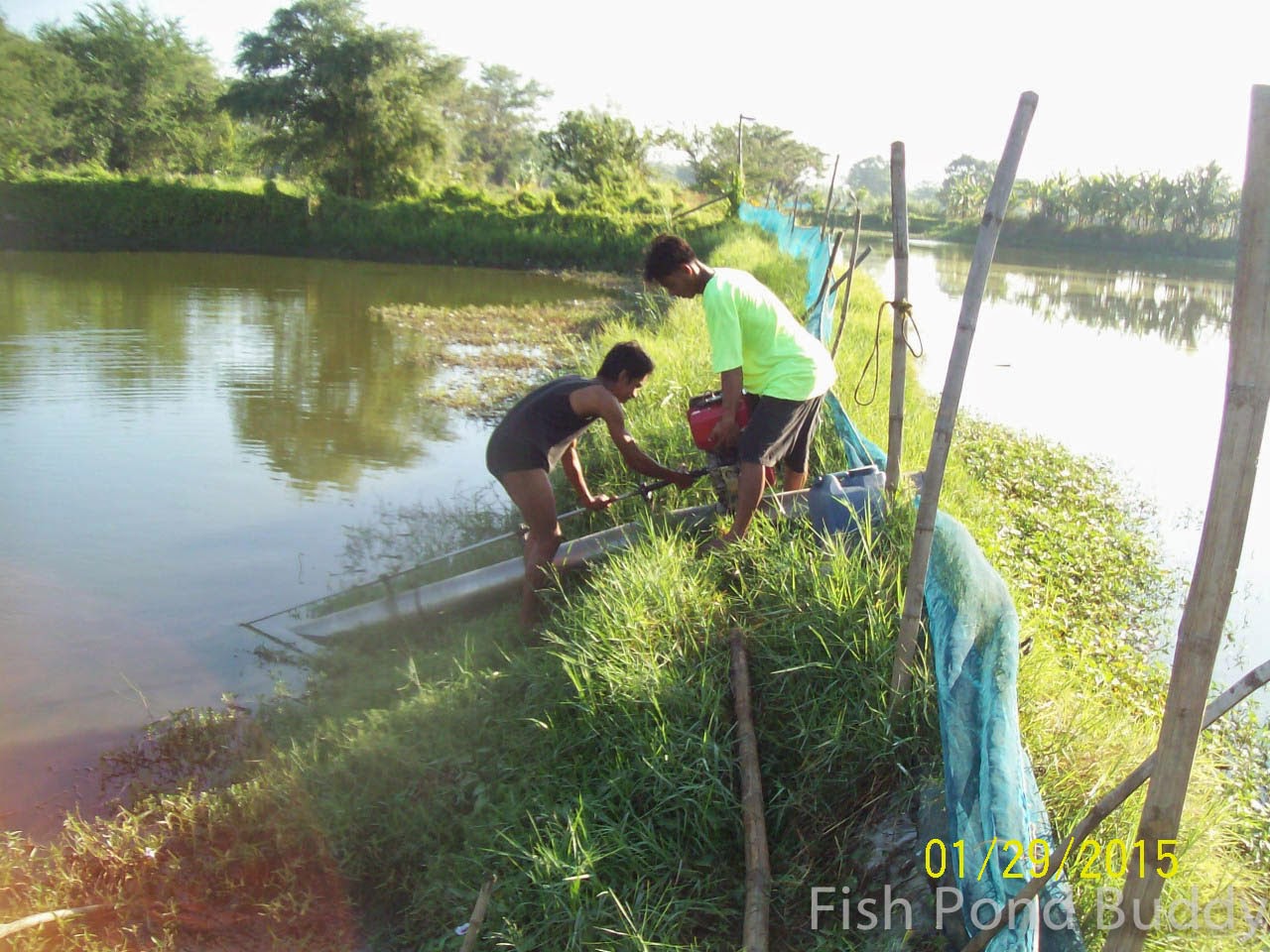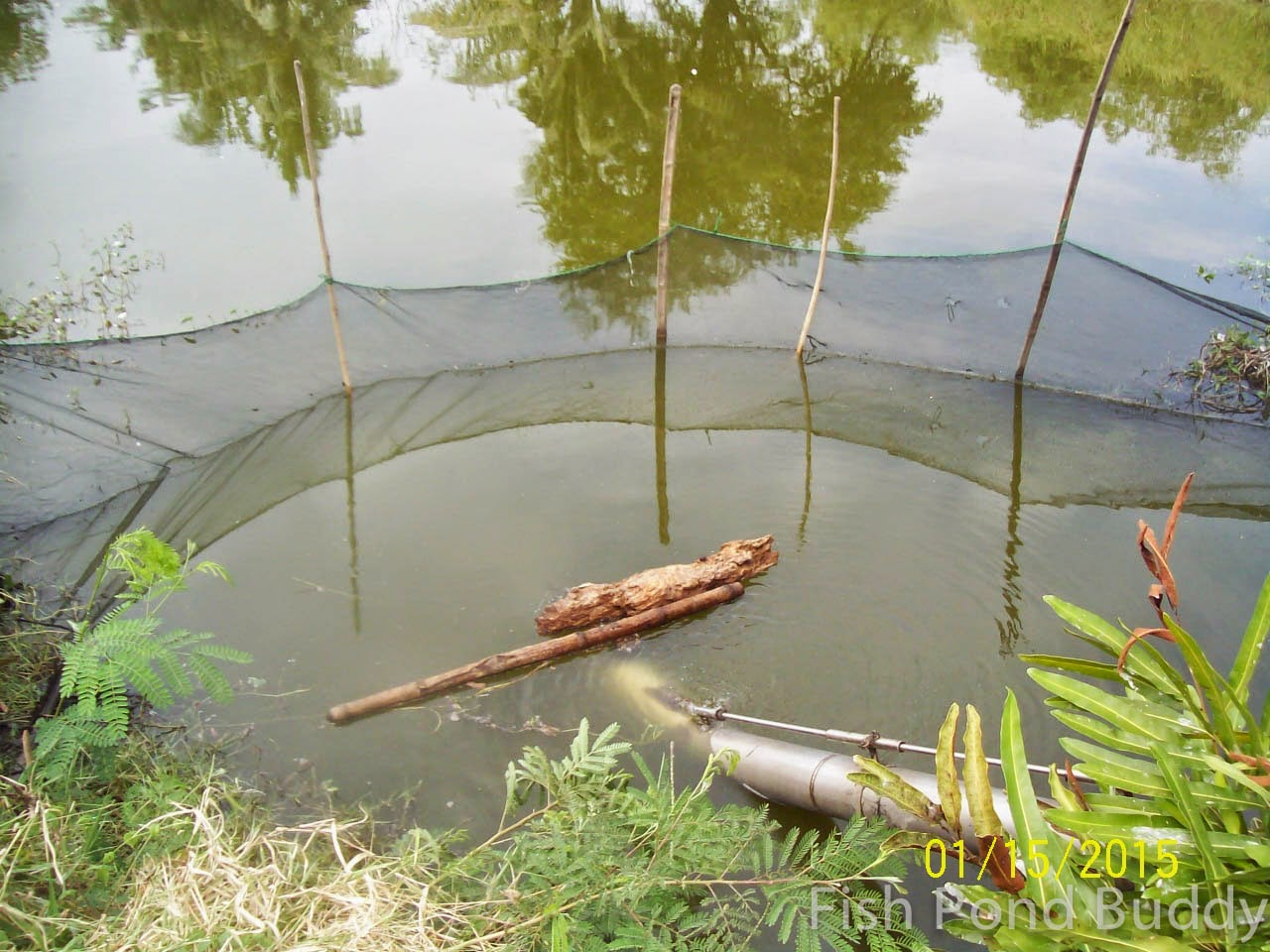How to Harvest Using Pond Draining (“Limas”)
Last month, we harvested our remaining fish stock toward the last part of the cropping season. In addition to the usual “kalokor” (harvest method using net), we did a complete draining (“limas” in Pangasinense) of one of my smaller ponds. That is, we totally removed the water from the pond. The pond contains some bangus, tilapia, and a few tiger prawns at the time.
It was in the middle of the dry season and water level has been receding to dangerously low levels. Pond draining was a preemptive move designed to save the prawns which are vulnerable to severe “tangok” (fish kill or stress due to low dissolved oxygen in the pond) in this kind of weather and season.
We also wanted to rid the pond of competitor fish like tilapia and burrowing predators such as mudfish (“dalag” in Tagalog, "gele-gele" in Pangasinense) before the start of the next cropping year. Pond draining allows the fish farmer to prepare the pond bottom, dikes, and gates for the next crop. For step-by-step procedures on pond preparation, click this (and go to the section on "How to Prepare the Bangus Pond After Acquiring It").
In a closed system, pond draining is done once a year usually when water levels are at their lowest.
Equipment and Devices Needed
1. Set of water pumps – each set consisting of the water pump motor and stainless steel hose. Depending on the pond size, one or two sets are usually needed.
 |
| Water pump and stainless steel hose |
2. Tool set and supplies for operating the pump - usually consisting of diesoline container, diesel oil container, closed wrenches, pull string, grease gun, grease, diesoline.
 |
| Tools inside woven basket; worker filling grease gun container with grease; bottom end of stainless steel hose shown |
3. Tricycle (motorcycle with side car) for transporting the above.
Not many fish farmers have their own drainage pumps. Instead, Item 1 is usually rented from a water pump owner. Current rate is Php700 for 12 hours which includes the services of two operators. The pump owner takes care of items 1,2 and 3, while the one renting provides the fuel (diesoline).
4. Haul seine net ("kalokor" net) – rented from seine net suppliers for Php200, 300, 400 for 12 hours depending on size
5. Bamboo screens or slats (“sikop”) – leased or owned
6. Scoop nets (“tapigo”)
7. Sorting net (“saplar”)
In our case, we have our own two diesel motor pumps, one 16 HP and another 14 HP bought in Dagupan. The hoses (one 8” and the other 7” diameter) made of 1.2 mm stainless steel plate were supplied by a stainless steel hose fabricator in Binmaley, Pangasinan.
 |
| Two stainless steel hoses |
Procedures
1. Remove all the bangus using haul seine net (“kalokor”). For step-by-step procedures for kalokor, click this (and go to the section on "How to Harvest Bangus"). Transfer smaller bangus to other ponds to further grow them. Sell the bigger ones, including tilapia that are caught by the net.
2. Decide on the specific position of the pump(s) in the pond. Pumps are normally set up on the earth dike near the deepest portion of the pond being drained. Also, set it up on the dike next to the pond where water is to be transferred. If water is to be drained to a neighbor’s pond, make sure that proper arrangement has been made with the pond owner.
 |
| Pump discharging water into an adjacent pond |
 |
| Workers installing a water pump atop a stainless steel hose; at right is the adjacent pond where water is to be transferred |
 |
| Workers installing a second set of water pump and hose |
4. Set up a perimeter net around the stainless steel hose in the pond where water is to be pumped out. The bottom part of the stainless steel hose is placed at the deepest part of the pond which is surrounded by the net. Check the net to make sure that it is well anchored to the pond bottom (we use short bamboo hooked sticks (“tulaing”) for this purpose).
 |
| A net enclosure around the pumping area (usually the deepest part) where the hose is submerged |
5. Before operating the pump, make sure that the stainless steel hose is steady and properly anchored at the pond bottom. Do a test run of the pump and check if the rotating rod above the hose and hose propeller are turning smoothly.
6. Instruct the crew to start pumping out water early evening (assuming it takes about 12 hours to completely remove the pond water), say around 6 or 7 pm. It is best to do harvesting in the early morning when fish and prawns are visible and can be easily hand picked.
7. Monitor the running of the pump(s). Be careful not to let in loose plastic bags or jute sacks into the stainless steel tube while the pump is running. This will cause damage inside the moving parts (propeller) of the hose and even cause misalignment of rotating rod.
8. Make small canals leading to the deepest portion of the pond to make sure that all the water throughout the pond flow naturally to this designated catchment area.
 |
| Making canal toward the catchment area just outside the perimeter net |
 |
| Workers making canal to divert pond water to catchment area |
 |
| Bamboo screen ("sikop") set up across the canal leading to the catchment area |
 |
| Workers starting to hand pick fish/prawns |
 |
| Putting catch inside scoop net ("tapigo") |
In a Class A pond, it’s possible to let in new tidal water in the next incoming high tide. The bangus then swim against the current created by the incoming tidal water. Thus the bangus gets drawn into the catchment basin where they can be easily caught. In the case of “limas” in a Class C pond like ours, the tilapia and bangus do swim to the deepest part because they have no choice.
11. Remove the bigger sized tilapia and all mudfish (“dalag”) regardless of size. We normally sell smaller sized tilapia (size of teaspoon or matchbox) as fingerlings. Meanwhile transfer all tilapia from the scoop net to a sorting net (“saplar”) for sorting and counting later. Put all mudfish (“dalag”) in a separate scoop net.
12. During the latter part of the limas, set up a small catch net (supported by bamboo sticks) along the improvised canal leading to the deepest part of the pond. This is to aid in catching remaining tilapia, especially the fingerlings.
 |
| A small catch net across the canal |
13. Using two workers, remove the bamboo screen/slats (“sikop”) from its original position and drag it along the bottom toward the catch net. This will drive the remaining tilapia toward the catch net where they can easily be hauled in.
 |
| Dragging bamboo screen toward catch net |
 | ||
| Worker showing two big-sized prawns during clean-up phase |
 |
| Close-up of two tiger prawns picked up from pond |
15. Assign persons to monitor the movements of neighbors, onlookers and fish scavengers.
During “limas”, it is normal practice for neighbors (usually women and children) in the community to come over and watch the “kemel” operation (hand picking of fish by pond workers). They wait for the “kemel” to be completed and for the stranded fish on the ground to be picked up by workers.
Later, with the permission of the caretaker/pond owner, they all go down to the pond and scavenge for remnant fish ("kambog" in Pangasinense). Outsiders however are strictly told to keep off the pond and not scrounge for fish while regular workers are still at work in the pond and “kemel” is still ongoing.
 |
| Kemel fish catcher still at work combing through the almost drained out pond |
16. Sort out the fish in the sorting net. All the prawns are placed in a separate scoop net. So are all the mudfish (“dalag”). Bangus which are of market size are taken out to be sold. Fingerling-size tilapia are counted and hauled in live for delivery to the tilapia buyer (these are placed in plastic vats with water). Mudfish (“dalag”) are also kept in plastic drums with water and brought live to the Dagupan fish center. (Note: live tilapia and dalag command higher prices.)
Below is a video coverage of a pond draining and tilapia harvest done in one of our grow-out ponds. It's a 6-part video which we uploaded in YouTube. The clip below is just the first part. Hope you view, like, and share the other 5 parts. Thanks for watching guys!
For a complete list of Fish Pond Buddy blog posts on fish farm-related topics, please click the Index page.

































